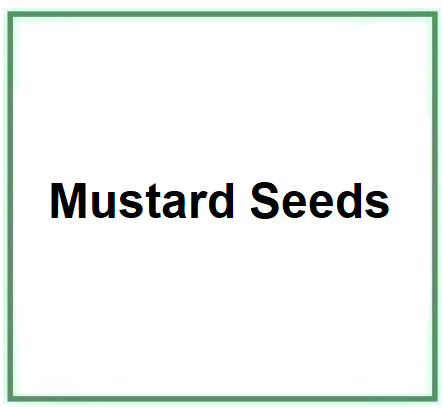Mustard seeds are obtained from mustard plants (Sinapsis species, Brassica alba, Brassica nigra and others) that belongs to the Brassicaceae family and is an oily vegetable crop from which oil and seeds are mainly obtained.
Yellow mustard is obtaided by Brassica alba plant.
Oily crops contain high levels of tocopherols, which prevent the oxidation of lipids and thus contribute to improving the longevity of the seeds (1).
Because of their non-polar nature, tocopherols become part of seed oil after oil extraction, where they play a key role as antioxidants in vitro and in vivo. In vitro, tocopherols are the main compounds that protect the oil from lipid peroxidation, which causes the absence of flavors and the reduction of shelf life (2).
In vivo activity of tocopherols is exercised in the human or animal body after they are consumed in the diet or in vitamin supplements, where they protect cells from oxidative stress (3).
Mustard contains substances of interest for human health such as (4) :
- Erucic acid
- Vitamin E
- Alpha tocopherol
- Gamma tocopherol
The fatty acid profile in yellow mustard (Brassica alba) is dominated by erucic acid with 6.87%, followed by oleic acid with 5.08% and linoleic acid with 1.87%, while in black mustard (Brassica nigra) the predominant fatty acid is oleic with 22.96%, followed by linoleic with 6.63% and linolenic with 3.22% (5).
Safety
Mustard has been commonly used in homeopathic and traditional medicines, where it is believed to have anti-microbial and anti-inflammatory properties and in the treatment of ailments ranging from arthritis to respiratory congestion. This case highlights the potential danger of misuse of homeopathic homeopathic DIY remedies such as mustard powder (6).
Mustard studies
References_________________________________________________________________________
(1) Sattler SE, Gilliland LU, Magallanes-Lundback M, Pollard M, DellaPenna D Vitamin E is essential for seed longevity and for preventing lipid peroxidation during germination. Plant Cell. 2004 Jun; 16(6):1419-32.
(2) Shahidi F, Zhong Y Lipid oxidation and improving the oxidative stability.
Chem Soc Rev. 2010 Nov; 39(11):4067-79.
(3) Galli F, Azzi A Present trends in vitamin E research. Biofactors. 2010 Jan-Feb; 36(1):33-42.
(4) García-Navarro E, Fernández-Martínez JM, Pérez-Vich B, Velasco L. Genetic Analysis of Reduced γ-Tocopherol Content in Ethiopian Mustard Seeds. ScientificWorldJournal. 2016;2016:7392603. doi: 10.1155/2016/7392603. Epub 2016 May 5.
(5) Mejia-Garibay B, Guerrero-Beltrán JÁ, Palou E, López-Malo A. Physical and antioxidant characteristics of black (Brassica nigra) and yellow mustard (Brassica alba) seeds and their products. Arch Latinoam Nutr. 2015 Jun;65(2):128-35. Spanish.
(6) Tartar DM, Sharon VR. Second degree burn to mustard powder. Dermatol Online J. 2017 Jan 15;23(1). pii: 13030/qt85q7r4wx.
![]() Mustard Seeds
Mustard Seeds 

